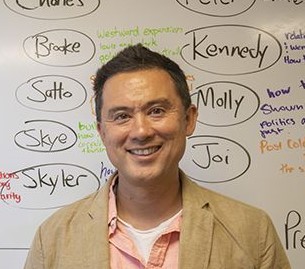Bodies and the Memory of Emotions in Testimony

During my dissertation research on the history of fear in the Weimar Republic, 1919-1933, a Corrie ten Boom fellowship provided the opportunity for me to visit the USC Shoah Foundation to explore the visual testimonies of the USC Shoah Foundation Visual History Archive. When I arrived, I was not exactly sure how I might make use of these incredibly important digitized collections in my project. I had already spent months combing through the archives of central German towns like Magdeburg, Nuremberg, Eisenach, Erfurt, Weimar, and Gotha through earlier research fellowships and had amassed collections from the local records of churches, synagogues, newspapers, state police, and personal collections from the region. However, it quickly became apparent that I could search the Visual History Archive for specific communities in my study, and I ultimately found over one hundred individual testimonies. Dozens of those people interviewed could recall their childhoods during the First World War and the Weimar Republic, and that opened up the possibility of sifting through their testimonies for more personal evidence of Jewish life and experience in German communities before the Nazi seizure of power. What I found were rich, detailed recollections of personal experience and everyday life in a contested time of change. Moreover, in the narrative framework of these testimonies lie many more details about everyday life and politics and new questions about how German communities changed in ways that created the potential for future persecution and genocide. Hopefully, this might inspire new ways to think of using the Visual History Archives in the future.
Among the more unusual findings were rare corporal expressions of feeling, like a survivor’s memory of “goose pimples” in reaction to daily peer bullying encouraged by a classroom teacher in the middle of the Weimar Republic. These descriptions of embodied fear raised additional questions for me about the role of the body in anti-Semitic affective practices and everyday resistance. I explore these questions in a chapter of a newly published co-edited volume Feelings Materialized: Emotions, Bodies, and Things in Germany, 1500-1950 (Berghahn Press, 2020). Unpacking the layers of such a visual history testimony and memory present problems of time and space, as well as questions about the terms of translation across languages, potential self-editing and forgetting. The memory of the skin rising on one’s body might otherwise go unnoticed, but such corporal expressions offer a way to explore how the body can inform how a person sensed the environment that was originally involved in creating those corporal reactions to a very specific memory of everyday life, in this case involving her peers and teacher, and how that sensation continued to shape how that person actively assembled her memories of that past and reified more specific emotions over time and space in the process, including specific words, personal goals, images, sounds, etc.
Additionally, the testimonies reveal a very wide and diverse range of how Jewish and gentile families, friends, and acquaintances responded to rising anti-Semitism in these communities, particularly in their memories of home and school life in the middle of the 1920s. There were more responses than I first expected to find. Jewish parents drew from Biblical tradition as well as from contemporary discussions of boxing and martial arts or Zionism to help support their children in the face of increasing bullying at school. In the face of growing harassment, some parents resigned themselves and invoked a fatalistic view to Jewish history in talking with their children, while others more actively fought back against the changes taking place in their communities, and still others tried to move away in the hopes of finding a better life for their families. There are also rare but important glimpses of gentile acquaintances, colleagues, and friends having to make their own decisions, with the rise of peer bullies at school, some willing to stick it out in genuine friendship or camaraderie with their Jewish friends and classmates, and many others more easily siding with, if not actively taking part in, the harassment of their Jewish peers and the racial transformation of their communities in the process.
Those glimpses of gentile youth siding with their peers and adults who led the persecution of a Jewish classmate have also inspired a new comparative project that looks at the role of emotions in the rise of Nazism and contemporary rightwing politics among young people in Europe, the US, and elsewhere. Often when I mention my work on emotions and the rise of Nazism, many people whom I meet immediately point out the relevance of such studies to what is going on today. It is easy to draw such comparisons. I hope to keep working with the USC Shoah Foundation’s Center for Advanced Genocide Research and the Emotions Studies Network in the German Studies Association to develop more insightful comparative analysis of key changes and continuities in the resurgence of hatred in politics around the world today.
Like this article? Get our e-newsletter.
Be the first to learn about new articles and personal stories like the one you've just read.
